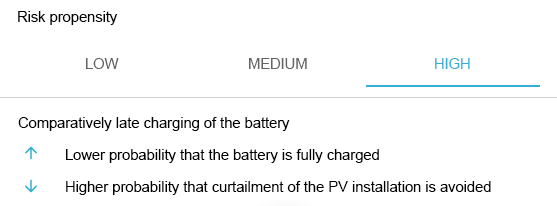FEMS App Grid-Optimized Charging
1. Introduction
Dear customer,
Thank you for choosing the "FEMS App Grid-Optimized Charging". You are welcome to send us your suggestions so that we can further improve the quality of our products.
2. App activation
If you have purchased a FENECON Home 10 electrical energy storage system from FENECON, the app is already included and pre-installed:
System |
FENECON Home 10 |
FENECON Home 6, 10 & 15 |
FENECON Home 20 & 30 |
FENECON Commercial 92 |
|---|---|---|---|---|
App pre-installed |
If you have purchased another electrical energy storage system that does not have the app pre-installed, you will have received a 16-digit license key when you ordered the "FEMS App Grid-Optimized Charging". You can use this license key in the FEMS App Center to install the app.
3. FEMS App Grid-Optimized Charging
The "FEMS App Grid-Optimized Charging" is an advanced version of self-consumption optimization. It uses forecasts of local power generation and power consumption to optimize the charging behaviour throughout the day. This results in a flatter feed-in curve and avoids power losses due to PV curtailment as far as possible.
As soon as the "FEMS App Grid-Optimized Charging" has been activated on your FEMS, you will see this widget in your monitoring:
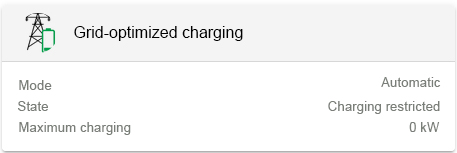
If the app has already been activated for some time, you will see a widget similar to the one below:

4. Overview
The following information can be viewed in the overview:
-
Mode: Indicates the current grid-optimized charging mode:
-
Manual
-
Automatic
-
Off
-
-
Status: Indicates the current status. A distinction is made between the following states:
-
Loading limit active
-
End time not calculated
This condition exists, for example, if the app has been in operation for less than one day (see Widget — Initial operation) -
Feed-in limitation is avoided
-
No charging limit active
-
No limitation possible (restriction by controls with higher priority).
-
End time of limited charging exceeded.
-
Electrical energy storage already full
-
-
Maximum charging: Indicates the current maximum charging of the electrical energy storage.
-
End time of the restricted charging: Time until the restricted charging should continue.
5. Extended display
Click on the widget to open the detailed view of the FEMS app:
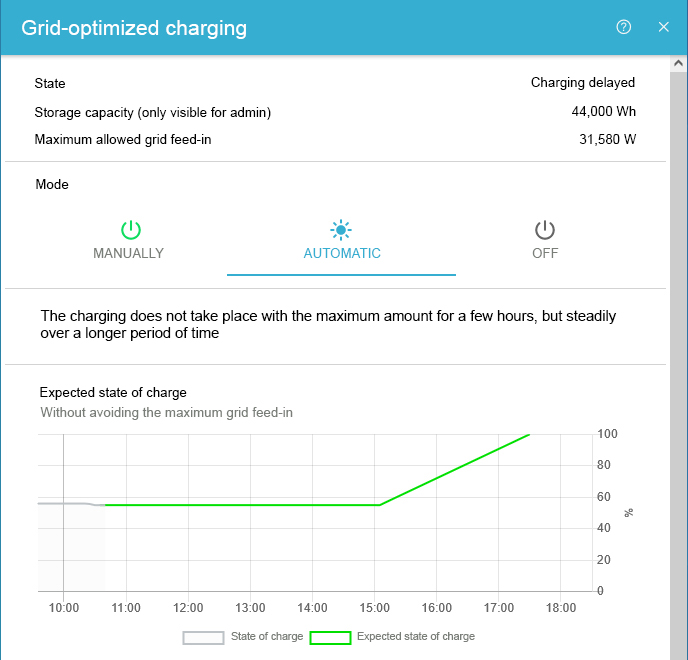
Further information is provided here.
-
Maximum permitted grid feed-in: Maximum power (of the PV system) that may be fed into the grid.
| This value is either specified initially when the order is placed or recorded during commissioning. If this value has changed, it can be changed by the installer in this detailed view. |
There are three different operating modes:
-
Manual: The time at which the electrical energy storage should be fully charged must be set manually.

In this case, the default setting of 17:00 was used.
-
Automatic: The time at which the electrical energy storage should be fully charged is determined by automatic calculation.
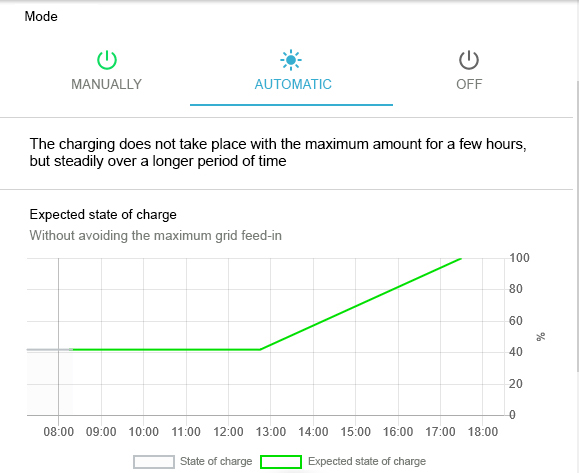
-
*Off: Grid-optimized charging is deactivated. The control of the electrical energy storage switches to self-consumption optimization. The maximum grid feed-in is still taken into account.

6. State of charge of the electrical energy storage
In this view, the current and expected State of Charge of the electrical energy storage is displayed over time.
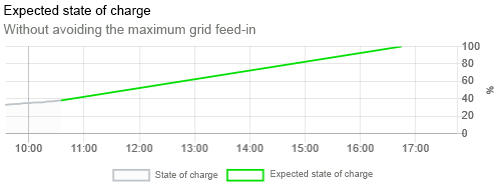
7. Willingness to take risks
In this view, you can choose between three different types of readiness to assume risks:
-
Low
-
Medium
-
High

7.1. Low

-
Very high probability that the electrical energy storage will be fully charged.
-
Greater probability that the PV curtailment will take effect because the electrical energy storage system is already fully charged.
7.2. Medium

-
High probability that the electrical energy storage will be fully charged.
-
Low probability that the PV curtailment will take effect because the electrical energy storage system is already fully charged.
